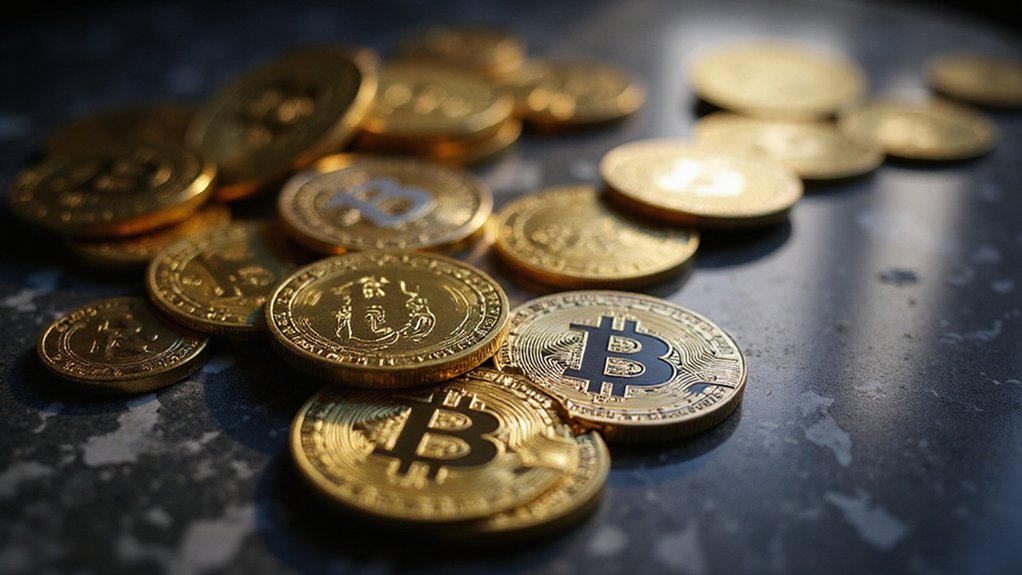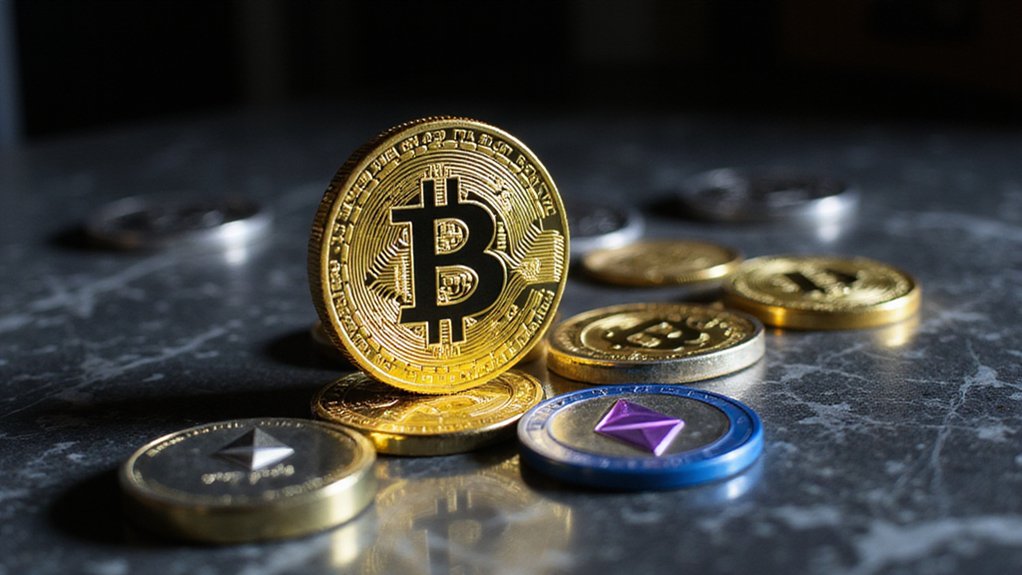The cryptocurrency exchange-traded fund landscape appears poised for what industry observers are calling a veritable altcoin bonanza, with over 70 ETF applications currently languishing in the Securities and Exchange Commission‘s regulatory purgatory—a development that would have seemed fantastical just five years ago when Bitcoin itself was considered too volatile for traditional investment vehicles.
The approval odds tell a compelling story of regulatory acceptance that borders on the remarkable. Solana and Litecoin command a 90% probability of ETF approval in 2025, while XRP trails slightly at 85%—impressive numbers considering these assets were once dismissed as speculative playthings. Even Dogecoin, that peculiar monument to internet culture masquerading as serious finance, boasts an 80% approval likelihood alongside HBAR.
Heavy-hitting institutional players like Grayscale, VanEck, and 21Shares are orchestrating this regulatory ballet, submitting S-1 filings with the methodical precision of Wall Street veterans who’ve apparently decided that cryptocurrency’s mainstream moment has arrived. The SEC’s recent requests for updates on Solana ETF filings—particularly regarding in-kind redemption procedures—suggest regulators are approaching these applications with genuine consideration rather than reflexive skepticism.
The regulatory machinery churns with clockwork efficiency: issuers must submit updated S-1 filings by mid-June, followed by SEC comments within 30 days of submission. This bureaucratic choreography could culminate in first approvals by late 2025, assuming the typical delays that plague spot crypto ETFs don’t materialize. The Dogecoin ETF decision timeline extends the regulatory conversation further, with a final deadline pushed to January 9, 2026.
Perhaps most intriguingly, the SEC’s classification of assets like Solana and Litecoin as commodities rather than securities removes significant regulatory obstacles—a distinction that carries profound implications for approval prospects. The potential inclusion of staking mechanisms within ETF structures adds another layer of complexity and appeal for yield-seeking investors. Market analysts are closely watching these developments, particularly given optimistic forecasts that suggest Solana potentially reaching $515 by 2025, driven by increased institutional adoption and technological improvements.
Should these approvals materialize, the market implications extend far beyond mere product proliferation. Enhanced liquidity, mainstream adoption acceleration, and integration of cryptocurrencies into traditional financial markets represent transformational shifts that could fundamentally alter how institutional and retail investors engage with digital assets. The question isn’t whether this altcoin ETF surge will reshape the investment landscape—it’s whether traditional finance is prepared for the inevitable flood of capital that will follow regulatory blessing.









